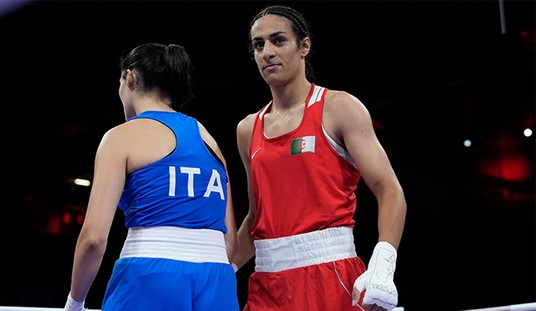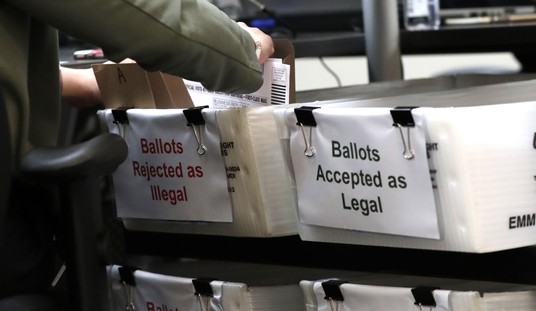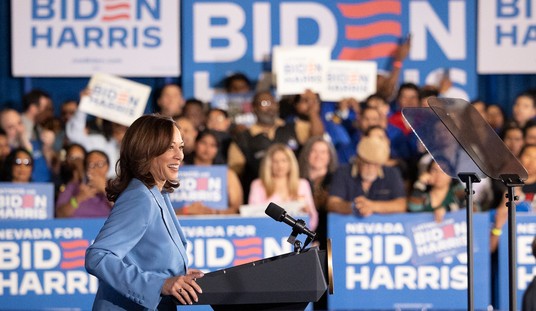Since Sept. 11, the Defense Department has released a timeline of that day, the Senate Homeland Security Committee has released a report, and a State Department "Accountability Review Board" set up by Clinton herself has published its own analysis.
But the composite story derived from these sources raises more questions about Clinton's role on 9/11/12 than it answers. In fact, these sources cite no action at all personally taken by Clinton.
Here (in Washington, D.C. time) is the basic sequence of events on 9/11/12 as derived from the combined information presented in the three documents:
3:42 p.m. -- Dozens of terrorists rush through a gate at State's special mission compound (SMC) in Benghazi. A U.S. security officer in the compound's "tactical operations center" sees it on a video monitor, hits an alarm and cellphones the CIA Annex down the road and the U.S. Embassy in Tripoli.
3:45 p.m. -- The Tripoli embassy notifies Washington.
3:50 p.m. -- Ambassador Chris Stevens speaks by cellphone with his deputy chief of mission in Tripoli, telling him of the attack. "The DCM contacted the Libyan president and prime minister's offices to urge them to mobilize a rescue effort, and kept Washington apprised of post's efforts," says the ARB report. "Within hours, Embassy Tripoli chartered a private airplane and deployed a seven-person security team, which included two U.S. military personnel, to Benghazi."
3:59 p.m. -- Before either Defense Secretary Leon Panetta or President Barack Obama are informed, U.S. Africa Command "redirects" an unarmed drone toward Benghazi.
Recommended
3:45-4:00 p.m. -- The terrorists use diesel fuel to ignite an SMC building that houses members of the February 17 militia, who were supposed to help protect U.S. personnel. The terrorists, says the ARB report, "then moved to Villa C," where Stevens was.
About 4:00 p.m. -- A security officer brings Stevens and Information Management Specialist Sean Smith into a safe area of the villa, trying to elude the terrorists, then into a bathroom trying to elude smoke. When Stevens and Smith don't follow him out a window, he repeatedly goes back into the building to find them.
4:04 p.m. -- Still before Panetta or Obama have been notified, a translator and a six-person security team from the Annex leave for the SMC in armored cars. Up to then, they had been assembling weapons and trying to secure the aid of the February 17 militia.
4:25 pm -- The Annex team enters the SMC and has "a 15-minute firefight" with the terrorists, according the Senate committee report.
4:32 p.m. -- "The National Military Command Center at the Pentagon, after receiving initial reports of the incident from the State Department, notifies the Office of the Secretary of Defense and the Joint Staff," says the Department of Defense timeline. "The information is quickly passed to Secretary Panetta and Gen. (Martin) Dempsey (chairman of the Joint Chiefs of Staff)." Panetta and Dempsey are already at the White House for a pre-scheduled 5:00 p.m. meeting with President Obama.
4:40 p.m. -- The Annex team gets to Villa C. U.S. security personnel find Sean Smith's body. However, they are unable to find Ambassador Stevens "due to the intense fire and smoke," according the Senate committee report.
5:00 p.m. -- Panetta and Dempsey start their meeting with Obama, and are "able to brief the president on developments in Benghazi as they were occurring," according to the Senate committee report.
5:10 p.m. -- "The diverted surveillance aircraft arrives on station over the Benghazi facility," says the Defense Department timeline.
5:15 p.m. -- The Annex team sends State's security officers, suffering smoke inhalation, back to the Annex. "As the Annex team provided cover fire, the five DS (diplomatic security) agents' fully armored vehicle departed and took hostile fire as they left the SMC and turned right out of the C1 entrance." Along the way, they evaded a trap set by terrorists who "opened fire at the vehicle's side, shattering and almost penetrating the armored glass and blowing out two tires."
5:30 p.m. -- State's team reaches the Annex and joins Annex personnel in "defensive positions," according to the ARB report. Meanwhile, "Back at the SMC, the Annex security team at Villa C used small arms fire and took defensive positions to respond to an apparent second phase attack, which lasted about 15 minutes and included small arms fire and at least three rocket propelled grenades."
Just before 6:00 p.m. -- The Annex team returns from the SMC to the Annex, which then "began to be targeted by gunfire and RPGs, which continued intermittently for an hour," says the ARB report.
6:00 p.m. -- His meeting with Obama over, Panetta is back "in the Pentagon," where he begins new meetings "with senior officials," says the Defense timeline. These meetings last until 8:00 p.m. Sometime "during" them, Panetta "provides verbal authorization" for three actions: He orders two Fleet Antiterrorism Security Team (FAST) platoons stationed in Spain to prepare to deploy to Benghazi and to the U.S. Embassy in Tripoli. He orders a special operations force in Central Europe to prepare to deploy to Southern Europe, and he orders a special operations force in the U.S. to prepare to deploy to Southern Europe.
7:01 p.m. -- The small arms and rocket propelled grenade fire on the Annex stops.
7:15 p.m. -- The U.S. security team from Tripoli arrives at Benghazi airport in the plane chartered by the U.S. Embassy. But they are "held at the airport for at least three hours while they negotiated with Libyan authorities about logistics," says the Homeland Security Committee report. "The exact cause of this hours-long delay, and its relationship to the rescue effort, remains unclear and merits further inquiry."
8:39 p.m. -- The Pentagon issues "formal authorization" for the movement of military forces Panetta had previously verbally authorized.
10:58 p.m. -- The Associated Press runs a story quoting a statement from Hillary Clinton about the Benghazi attack that had already been released by the State Department. The statement alludes to Sean Smith's death, says Clinton had talked to Libyan President Magariaf and links the attack to what Clinton calls "inflammatory material posted on the Internet." The ARB report, Senate committee report, and Defense timeline do not mention Clinton's statement.
11:04 p.m. -- "The team from Tripoli finally cleared the airport and arrived at the Annex at approximately 5:04 a.m., about 10 minutes before a new assault by the terrorists began, involving mortar rounds fired at the Annex." (HSGAC)
Between 11:15 p.m. and 11:26 p.m. -- Terrorist mortars kill former Navy SEALs Tyrone Woods and Glen Doherty on the roof of the Annex.
When did Clinton first learn of the Benghazi attack? When did she first talk with her deputy chief of mission in Tripoli? Why did that DCM need to charter a private plane rather than get a U.S. military plane? When did Clinton first discuss with Obama, Panetta and CIA Director David Petraeus what was happening in Benghazi? Was she consulted on the military response? When did she talk to President Magariaf? When did she start preparing her 9/11/12 statement about the Benghazi attack, and why did she link it to "inflammatory material posted on the Internet"?
These are among the questions Congress must ask the secretary of state.
























Join the conversation as a VIP Member